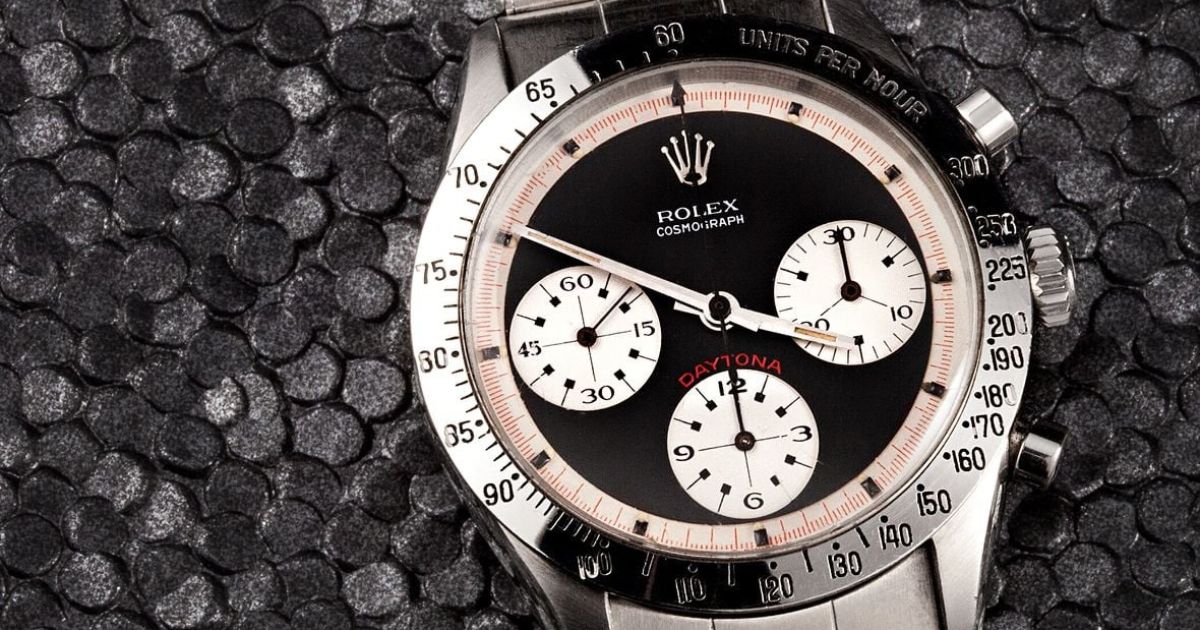Let’s start with the name itself. Derived from the Greek words “chronos” (time) and “graph” (to write), a chronograph is literally a “time writer.” It’s a watch that records elapsed time, functioning as a precise stopwatch on your wrist. It’s crucial to distinguish it from a chronometer, which is a precision-certified timepiece, but may not have a stopwatch function. A watch can be one, the other, both, or neither.[/vc_column_text][ultimate_spacer height=”30″][vc_column_text css=””]
The Anatomy of a Chronograph
At first glance, a chronograph might look busy with its extra sub-dials and pushers. But once decoded, its operation is intuitive.
-
The Main Time Display: This is your standard watch face, showing the hours, minutes, and often seconds.
-
The Pushers: These are the buttons on the side of the case, typically at 2 o’clock and 4 o’clock. They are the command centers for the stopwatch function.
-
Top Pusher (2 o’clock): This is the start/stop button. Press it to begin timing; press it again to pause.
-
Bottom Pusher (4 o’clock): This is the reset button. It can only be pressed after the chronograph has been stopped. This safety feature prevents accidentally resetting an active timer.
-
-
The Sub-dials (Totalizers): These are the smaller dials on the main face that measure the recorded elapsed time.
-
Seconds Counter: Typically, this is the central seconds hand that sweeps around the main dial when the chronograph is activated. Important: On many chronographs, the central seconds hand is for the stopwatch only. A small sub-dial (often at 9 o’clock) acts as the running seconds hand for the main time.
-
Minute Counter: A sub-dial (often at 12 or 3 o’clock) that counts the elapsed minutes, usually up to 30 or 60 minutes.
-
Hour Counter: A less common sub-dial that counts elapsed hours, usually found on more complex models.
-
How to Use a Chronograph: A Step-by-Step Guide
-
Start: Press the top pusher. The central chronograph seconds hand will begin to sweep.
-
Stop: Press the top pusher again to halt the timing. You can now read the elapsed time.
-
Reset: Once stopped, press the bottom pusher. All the chronograph hands (central seconds and any minute/hour counters) will snap back to zero, ready for the next use.
For timing multiple events without resetting (like lap times in a race), you can use a flyback function (found on higher-end models) or simply stop and note the time before restarting.
[/vc_column_text][ultimate_spacer height=”30″][vc_column_text css=””]A Glimpse into the Mechanism: How It Works Inside
This is where the true magic happens. The chronograph is a module added to the base movement (whether automatic or manual-wind). When you press the start pusher, a series of exquisite levers and springs engage:
-
The Coupling Clutch: This is the heart of the operation. In most modern chronographs, a vertical clutch or a horizontal clutch connects the chronograph mechanism to the main gear train of the watch. Think of it as engaging the clutch in a car—it transfers power from the mainspring to the chronograph hands without disturbing the accuracy of the main timekeeping.
-
The Column Wheel vs. Cam Actuation: There are two primary systems for controlling the chronograph’s start, stop, and reset sequences.
-
Column Wheel: Often found in higher-end watches, this is a star-shaped wheel that rotates with each press of a pusher. It’s considered the more traditional, elegant, and smoother-acting system. Watchmakers and purists adore it for its tactile feedback and historical significance.
-
Cam Actuation: A more modern, efficient, and cost-effective system using stacked cams and levers. It is incredibly robust and precise, though sometimes considered less “romantic” than the column wheel.
-
The reset function employs hammers that, when the bottom pusher is depressed, hit against heart-shaped cams attached to the chronograph hands, forcing them all back to their zero position simultaneously.
[/vc_column_text][ultimate_spacer height=”30″][vc_column_text css=””]Beyond the Basics: Types of Chronographs
The basic chronograph is just the beginning. Haute horlogerie has developed several fascinating variations:
-
Rattrapante (Split-Seconds Chronograph): The pinnacle of chronograph complexity. It features two superimposed central seconds hands. You can stop one hand to record an intermediate time (e.g., a lap time) while the other continues running. A press of a third pusher will make the stopped hand “catch up” (rattraper in French) to the ongoing one.
-
Flyback (Retour-en-vol): Allows for instantaneous resetting and restarting with a single press of the bottom pusher, even while the chronograph is running. This was developed for pilots and navigators who needed to timing consecutive events without the multiple steps of stopping, resetting, and starting.
-
Integrated vs. Modular: An integrated chronograph is designed as one complete movement from the ground up. A modular chronograph is a separate stopwatch module built on top of an existing base movement. Each has its merits, with integrated designs often being more svelte.
More Than a Tool: A Statement of Craftsmanship
While we use chronographs to time our coffee brew or a parking meter, their true value lies in their representation of mechanical artistry. A chronograph movement is a symphony of interacting parts, a labyrinth of wheels, levers, and springs all working in perfect harmony. It’s a testament to human ingenuity, transforming a simple question—”how long did that take?”—into a breathtaking mechanical ballet.
Owning and using a chronograph is about connecting with this history and complexity. It’s a functional sculpture, a story of innovation worn on the wrist. So the next time you press that pusher and set the central hand in motion, take a moment to appreciate the centuries of engineering mastery you’ve just set into action.
[/vc_column_text][/vc_column][/vc_row]


